Roofing Services in Richmond upon Thames are essential for protecting your property’s value and safety, preventing leaks, damp, and unnecessary energy loss. Our trusted specialists serve London and the Home Counties, ensuring every roofing project is completed with meticulous compliance, attention to detail, and standards built for long-lasting performance.
With decades of experience, our team holds top accreditations including Which Trusted Trader and CITB, and we partner with premium suppliers such as Welsh Slate, ALM Lead, and Kemper. Book a free survey today and protect your property.

Neglecting roofing issues invites leaks that cause damp, energy loss through insulation failure, and progressive structural damage. Delay always increases costs and risks, turning minor issues into costly repairs for any property owner.

Professional Roofing Services in Richmond upon Thames resolve these risks, strengthening your weather protection, energy performance, and building regulation compliance. This matters whether you’re a homeowner seeking peace of mind, a landlord wanting long-term value, or a business needing operational safety and efficiency. Proactive roofing care is a secure investment—delivering peace of mind, regulatory clarity, and safeguarding properties of every type.
Roofing Services in Richmond upon Thames cover installations, repairs, upgrades, and restorations for homes, businesses, and heritage properties. We focus on long-term performance and compliance with Building Regulations, using quality materials from trusted suppliers. Every service is tailored to your roof type and delivered with safety, durability, and care at its core.
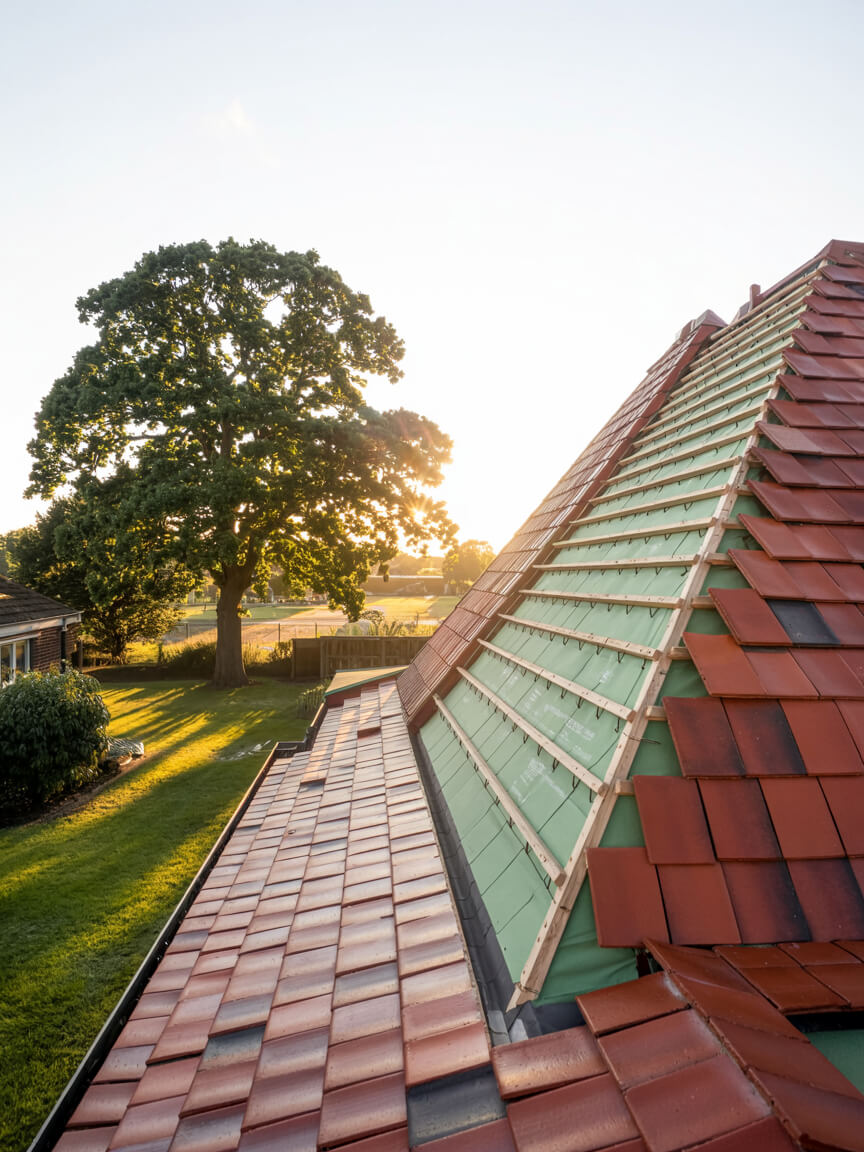
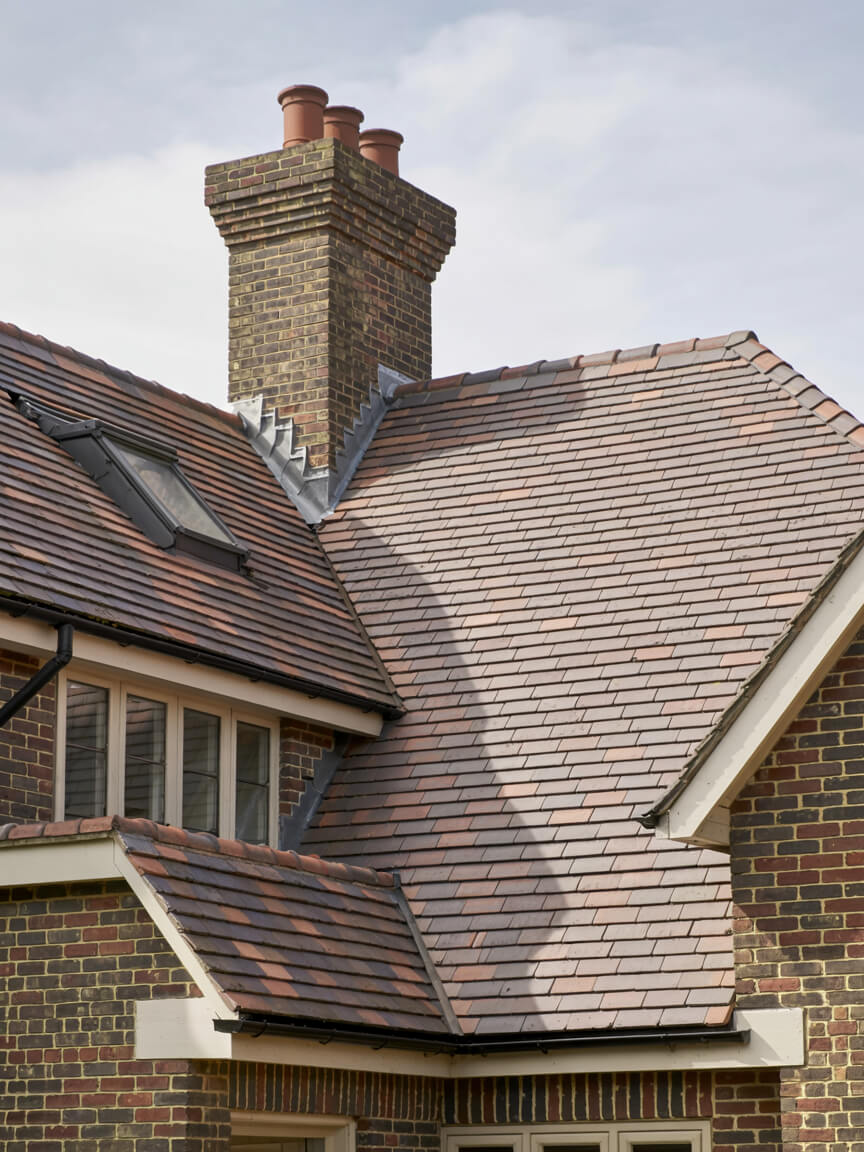
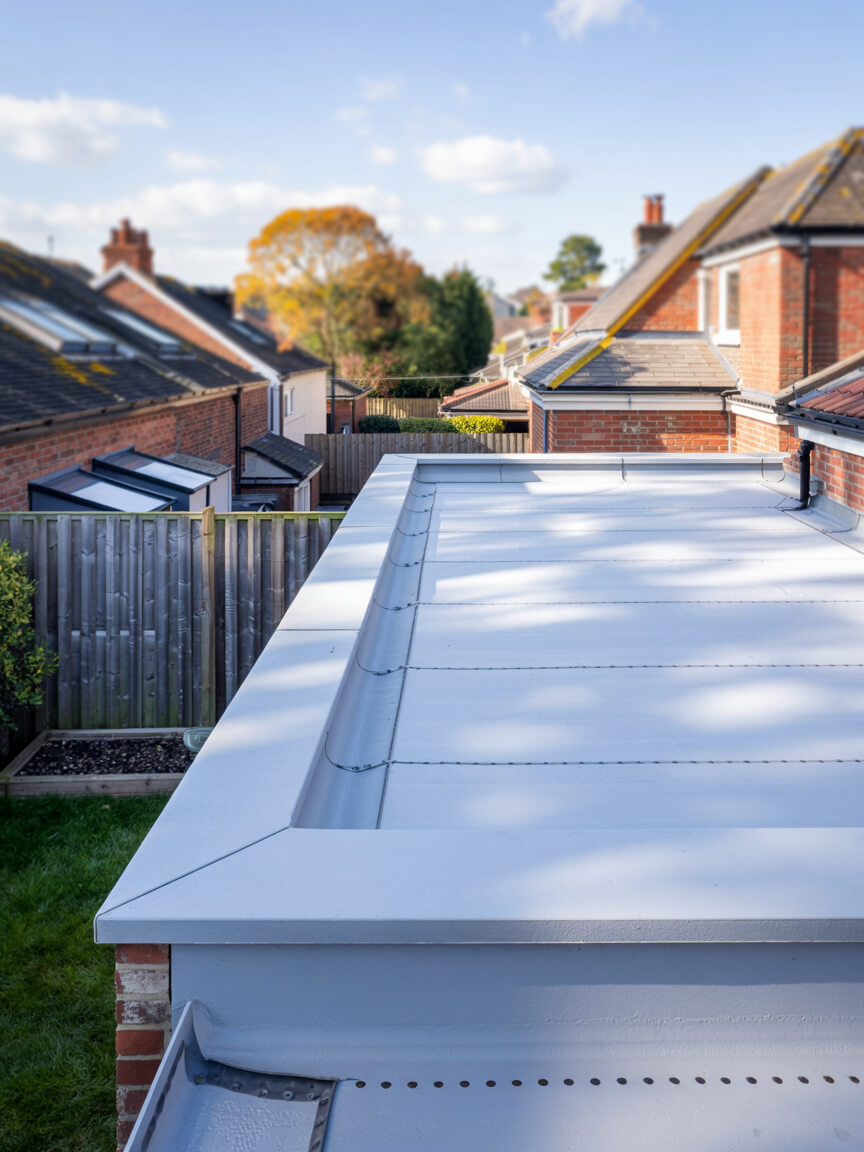
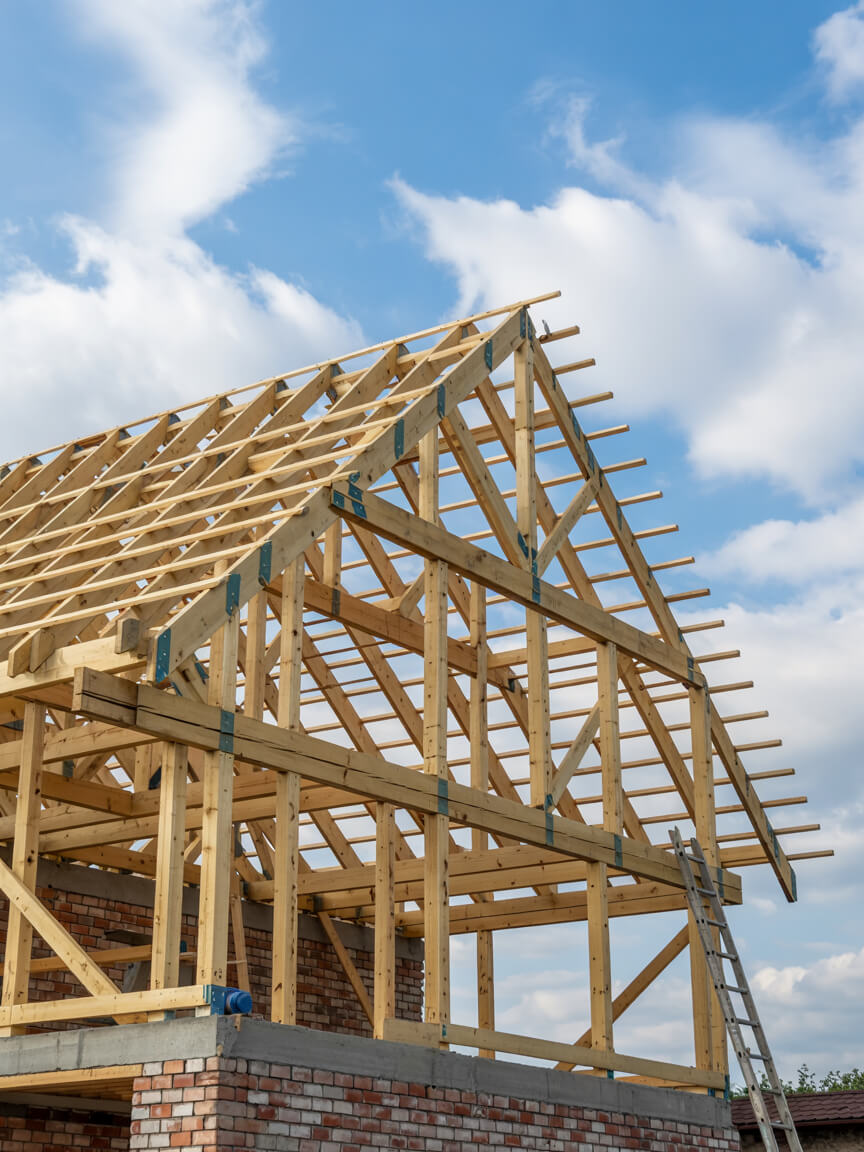
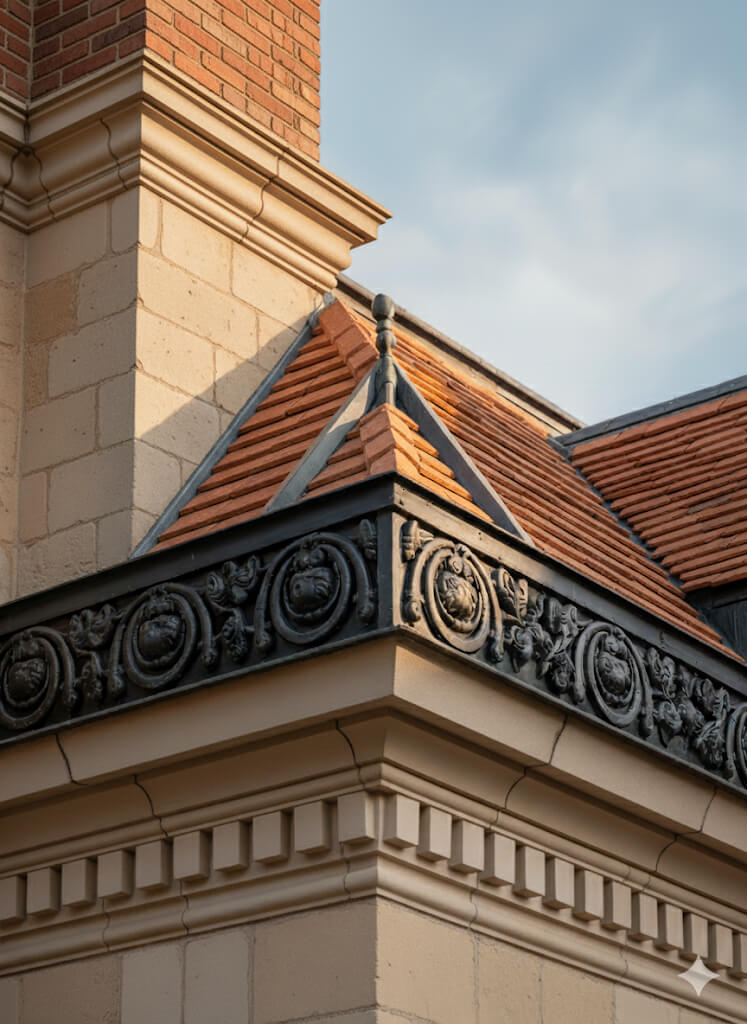
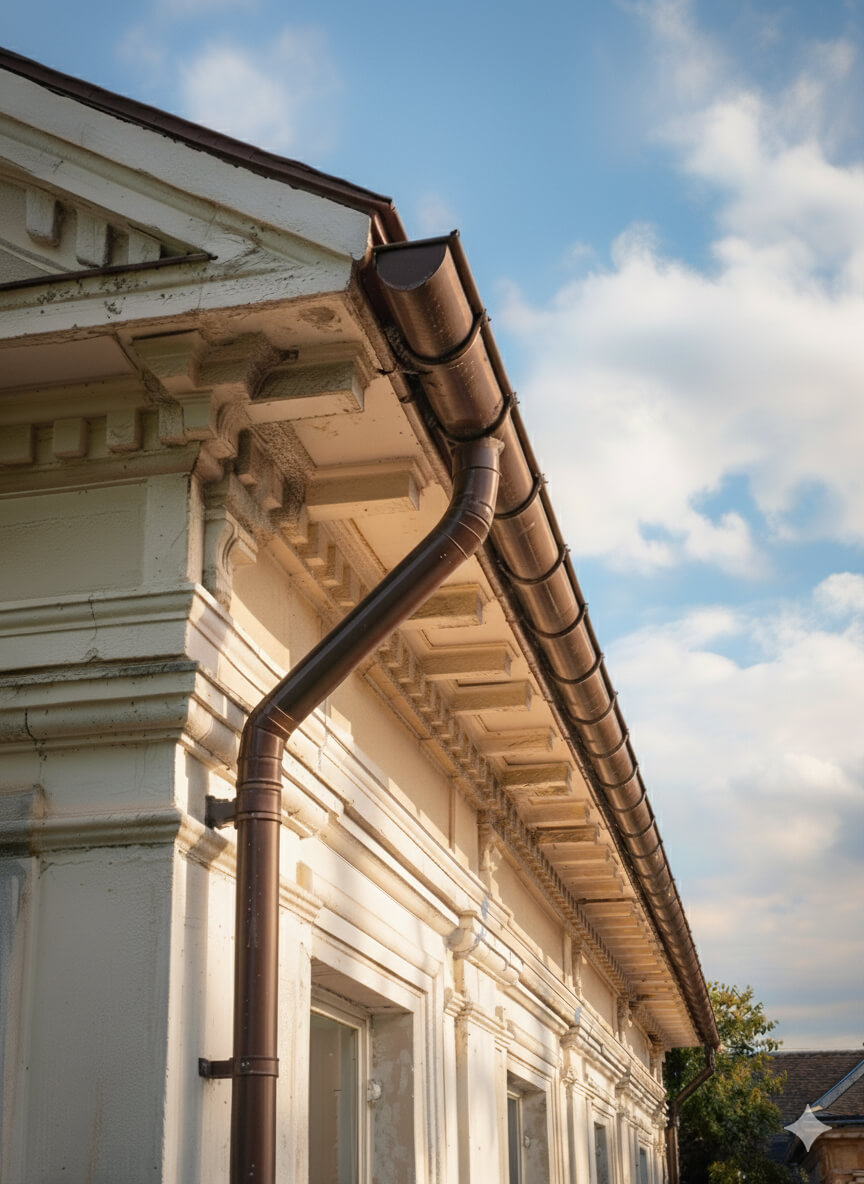

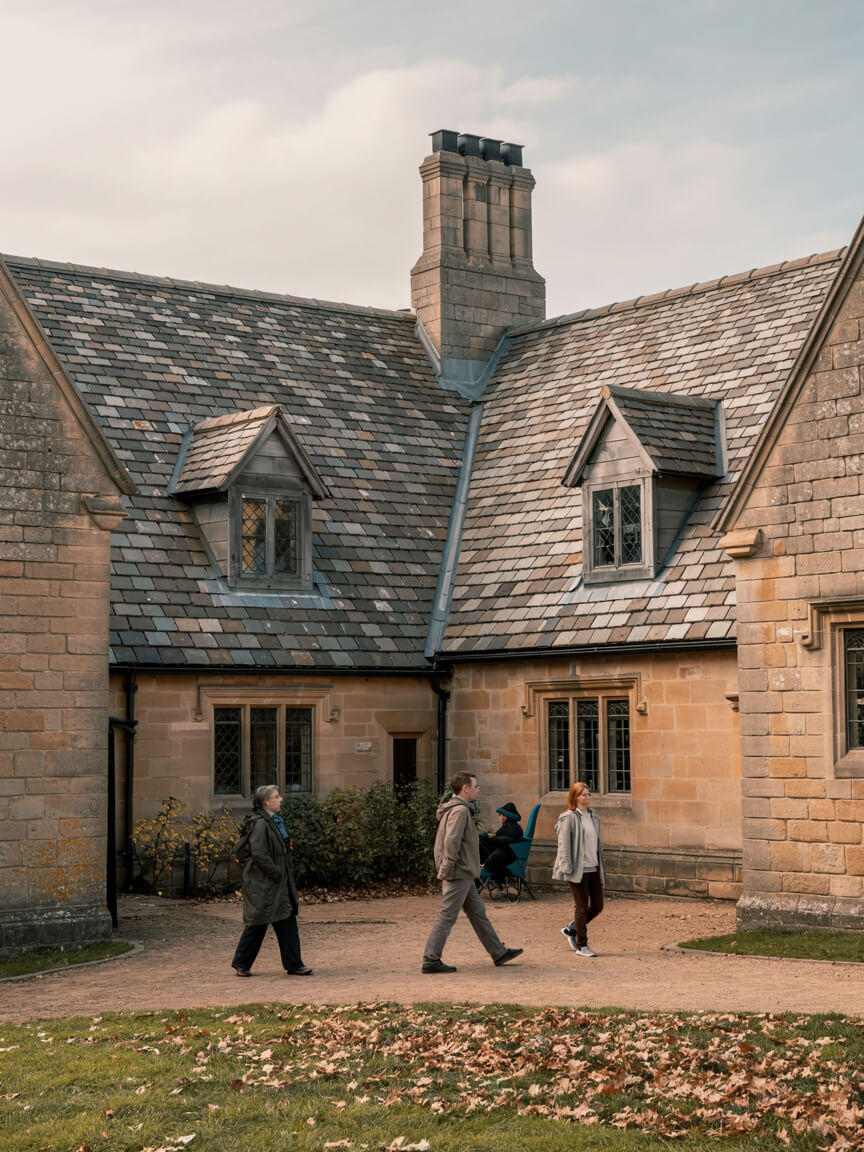
Every Roofing Services in Richmond upon Thames project is adapted to property type, roof structure, and environmental demands. Tailoring ensures compliance with regulations, minimises disruption, and maximises long-term value. From homes and businesses to industrial sites and listed heritage buildings, our flexible approach delivers roofing solutions that meet unique needs while ensuring safety, efficiency, and reliability.
Homes, extensions, and listed buildings.
Offices, retail, schools, and hospitality.
Warehouses, factories, and logistics sites.
Every Roofing Services in Richmond upon Thames project follows proven steps with quality materials. Whether it’s a new installation, upgrade, or repair, each layer adds durability, safety, and efficiency—tailored to protect your property and meet regulatory standards.
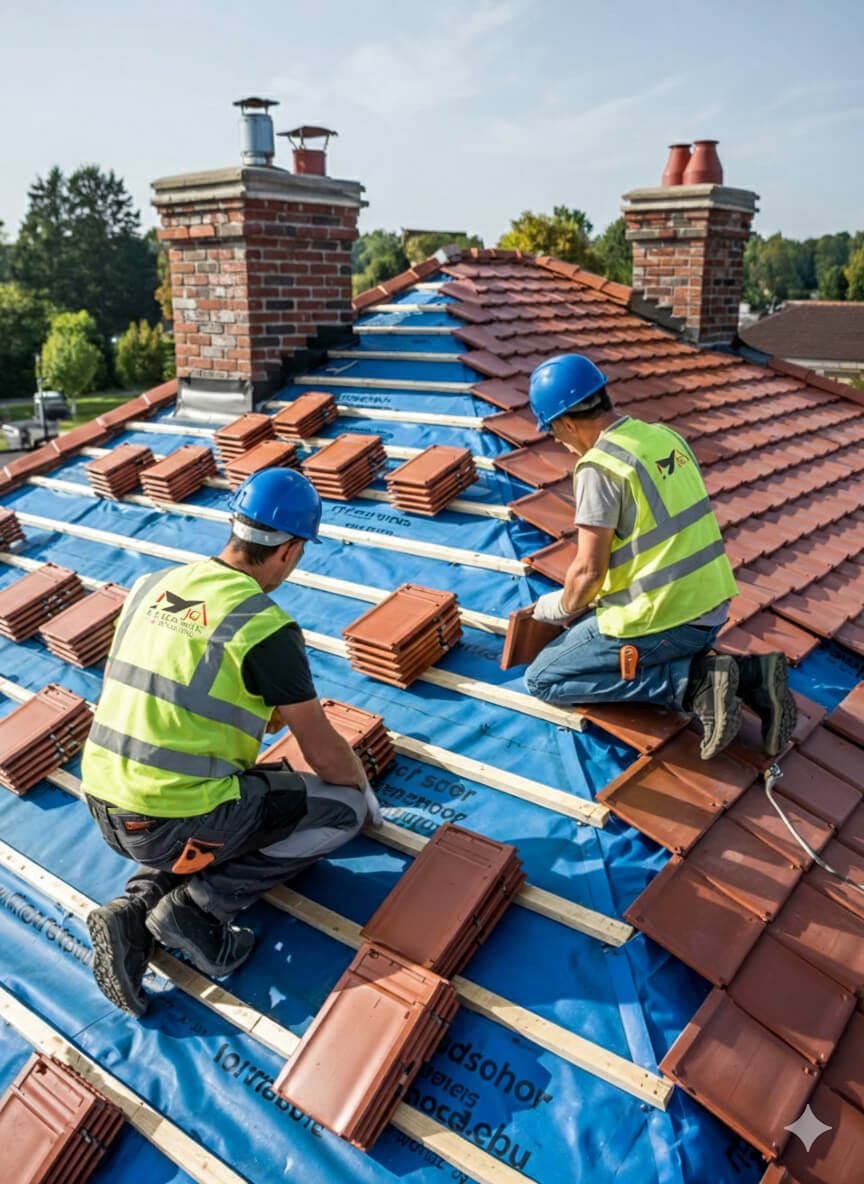
Get a free, no-obligation quote today.
Our experts are standing by to help you choose the perfect flat roofing solution.
⏱ Response within 24 hours guaranteed
Accredited by Which Trusted Trader, CITB, and approved by Kemper and Westwood, our team delivers safe, compliant, and warranty-protected Roofing Services in Richmond upon Thames projects. These credentials mean guaranteed standards and long-term assurance—reinforced by the positive client reviews that consistently highlight quality, professionalism, and trust.


Complete reroofing. Living in Singapore at the time and T was super responsive and communicative.
Replacement of lead box gutter and new flashing to parapet wall. I had an excellent experience using James and the team. He was very prompt in all aspects of communication and completed a first class job. Really pleased.
James completed some repairs on our roof and replaced some of our pebble dash by the roof as well. He was very thorough and fixed everything. He kept us really informed by taking photos and showing us what he did and keeping us updated. It also went onto our neighbours roof and he did the same fo...
We had a leak in our bedroom and James fixed the roof for us to stop it from leaking. All the work came with a warranty. The work that was carried out was good. James and his team were polite, and did all the work quickly and without too much interruption to our day-to-day lives. Would recommend ...
J G Leadworks have repaired and replaced the roofs and gulleys over our warehouse and workshops which have meant both areas are now watertight
James and team were incredibly responsive to my request to look at a serious leak issue on my flat roof. They did a very thorough investigation and explained in detail the issue and gave a fair quote. They were quick to book in and complete the work and have checked in afterwards a few times to m...
James was quick to respond to the initial contact and was able to work around some time constraints I had. He explained what needed doing clearly and was happy to answer follow up questions. He took pictures to show each stage and I feel confident in the work that was done by James and the team. ...
JG Roofing were very easy to work with. Their quote was sensible and they stuck to that figure. They completed many repairs to my roof including, rebuilding a leaded gutter, reinforcing rotten rafters, rebuilding a long felted gutter and felting parapet walls, resurfacing and felting a flat roof,...
Planning and legal checks protect clients from costly errors, delays, and non-compliance, ensuring roofing projects meet regulatory and safety requirements.
Permission is typically required for listed properties, conservation areas, or major roof alterations. All projects must also satisfy Building Regulations, including Part A (structural safety) and Part L (energy efficiency), ensuring compliant and future-proofed installations.
Our team manages the full process, from initial surveys to legal guidance, preparing documentation, and liaising with local authorities where needed. Whether working on modern homes or heritage sites, we ensure every project is delivered legally, safely, and with minimal disruption—providing complete reassurance and peace of mind to property owners.

Every project unites skilled workmanship with rigorously tested materials.
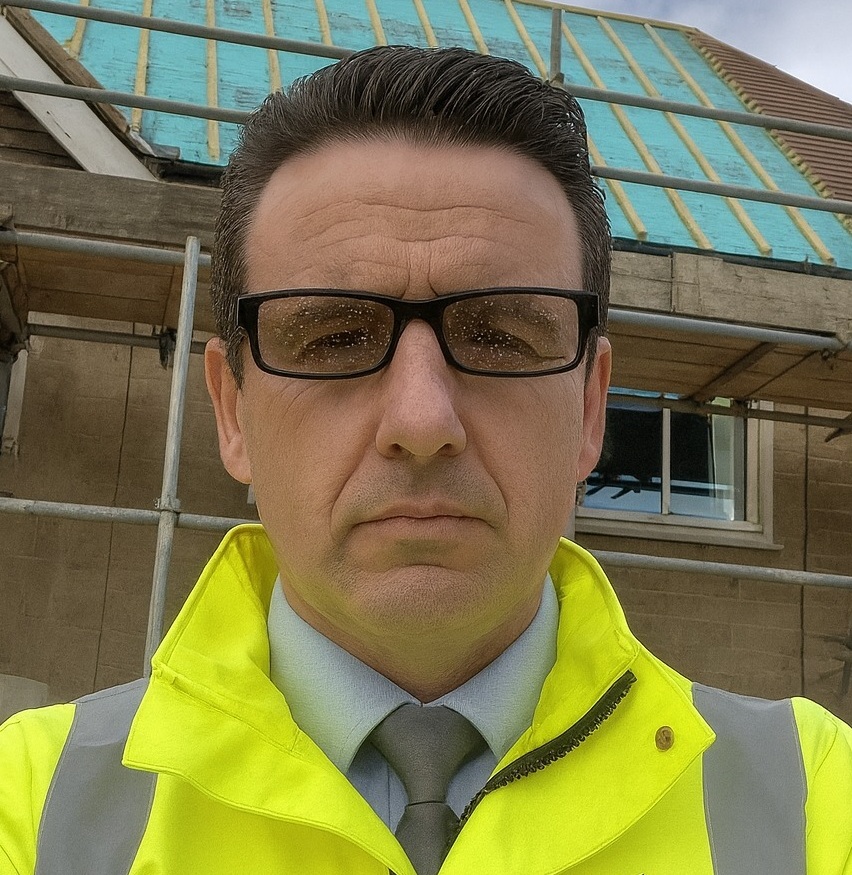
With 25 years of experience in lead sheet roofing, James is a trusted expert in heritage roofing, slate, and tiling. His knowledge of traditional methods, paired with modern compliance, makes him a go-to specialist for projects that demand both craftsmanship and durability.
Roofing Services in Richmond upon Thames provides lasting protection, efficiency, and value, delivering durable, compliant roofing solutions that safeguard every type of property investment.
Selecting Roofing Services in Richmond upon Thames involves balancing durability, budget, compliance, and aesthetics to secure the best-fit roofing solution for your property.
Why Clients Choose JG Leadwork and Roofing
With decades of trade experience, our teams understand the unique demands of London and Home Counties roofing. From heritage-listed properties to contemporary extensions, we adapt solutions to local regulations, weather conditions, and architectural styles with precision.
Accredited by Which Trusted Trader, CITB, and approved by Kemper, Westwood, IKO, ALM, and other leading suppliers.
These credentials guarantee safety, compliance, and access to manufacturer-backed warranties, giving clients peace of mind that their project meets the highest professional standards and benefits from warranty protection.
Our heritage projects use Welsh Slate and handmade clay tiles for authenticity, while leadwork is delivered to Lead Sheet Association (LSA) standards. Commercial installations employ Kemper and Westwood liquid systems for durability and efficiency. Each example demonstrates our reliability, blending traditional craftsmanship with modern performance.
Our workforce includes skilled roofers, heritage specialists, and safety-certified installers.
Every roofer holds NVQs, receives ongoing CPD training, and is qualified in both modern flat systems and traditional techniques, including slate and leadwork.
Team structure ensures projects run smoothly—surveyors identify needs, installers deliver with precision, and supervisors oversee compliance. This approach minimises disruption, accelerates timelines, and guarantees consistent quality across residential, commercial, and industrial roofing projects.
Every project is regulation-compliant, warranty-backed, and focused on long-term results.
Client testimonials and case studies confirm our track record, with projects praised for professionalism, durability, and customer support.
We go beyond installation with aftercare packages, maintenance support, and open communication at every stage. Property owners gain reassurance that JG Leadwork and Roofing stands behind its work. Book a free survey today and discover why homeowners, landlords, and businesses trust us with their roofing.

Get a free quote, rapid response, and expert service across London and the Home Counties. Contacting JG Leadwork and Roofing is your simple first step to dependable roofing solutions.
We source materials from leading suppliers including Supreme and IKO felt systems, Kemper, Westwood and Proteus liquid systems, Welsh Slate, handmade clay tiles, ALM Lead Mills, and Nicholson Air Track. These trusted brands guarantee durability, compliance, and warranty-backed performance across flat, pitched, heritage, and commercial roofing projects.
.
.
For homes, Roofing Services in Richmond upon Thames safeguards comfort and enhances kerb appeal with durable, energy-efficient systems. Whether modern extensions or traditional pitched roofs, tailored solutions improve living standards and protect property value.
For businesses, Roofing Services in Richmond upon Thames delivers cost-effective, large-scale installations with minimal disruption. Projects are planned around operations, with safety compliance, energy performance, and flexible scheduling built in—supporting offices, retail, schools, and industrial facilities with reliable, regulation-ready outcomes.
For heritage properties, Roofing Services in Richmond upon Thames combines authentic materials such as Welsh slate, handmade clay tiles, and ALM lead with skilled conservation techniques. Listed building consent and conservation requirements are fully managed, ensuring traditional character is preserved while integrating modern weatherproofing. This careful balance provides long-term durability without compromising historic integrity or aesthetic value.
JG Leadwork and Roofing delivers Roofing Services in Richmond upon Thames across housing, commercial, heritage, and public sectors. Every industry comes with unique requirements, from safety and compliance to efficiency and conservation. Our adaptability ensures projects are delivered with precision and professionalism—whether safeguarding homes, supporting business continuity, preserving history, or protecting critical public and healthcare facilities.
Durable roofing installed with minimal disruption, ensuring safe, regulation-compliant workspaces for staff and visitors.
High-standard, compliance-focused solutions protect community facilities while meeting strict safety and regulatory obligations.
Heavy-duty roofing tailored for wide spans, ventilation, and long-term maintenance efficiency.
Authentic materials and sensitive methods preserve historic character while adding modern protection.
Weatherproof systems that enhance kerb appeal and guarantee uninterrupted trading for outlets.
Tailored roofing improves guest comfort, safety, and ambience across hotels, restaurants, and venues.
Safe, durable systems designed for schools and universities with minimal learning disruption.
Specialist roofing solutions built for hygiene, safety, and regulatory compliance in medical environments.
Our team of NVQ-qualified roofers, LSTA-trained specialists, and health & safety-compliant professionals bring decades of combined experience. Every project is delivered with meticulous attention to detail, ensuring safe practices and consistent quality across flat, pitched, heritage, and commercial roofing disciplines.
Expertise includes heritage leadwork, slate and tile roofing, modern flat systems, and drone-assisted roof surveys. Ongoing CPD training ensures adaptability to both traditional craftsmanship and the latest innovations—giving clients confidence that every roof is built or repaired with proven skill and care.

A thorough survey highlights existing issues, structural considerations, and upgrade opportunities, ensuring the best-fit solution is identified from the very beginning.
Transparent, itemised quotes detail costs, timelines, and materials—giving you complete clarity and confidence before work starts, with no hidden surprises.
Scaffolding, access solutions, and robust safety measures are put in place to safeguard both property and people throughout the project.
Skilled roofers complete the work using accredited materials and proven techniques, delivering durable, compliant results while keeping disruption to a minimum—whether for repairs, replacements, or new installations.
Each stage is inspected against manufacturer standards and Building Regulations, with photographic documentation provided for transparency and peace of mind.
Each stage is inspected against manufacturer standards and Building Regulations, with photographic documentation provided for transparency and peace of mind.
In a competitive roofing market, many providers look the same on paper. JG Leadwork and Roofing stands out through proven expertise, accredited methods, and specialist techniques. Our combination of traditional craftsmanship and modern technology makes us the safer, smarter choice across residential, commercial, industrial, and heritage projects.
In a competitive roofing market, many providers look the same on paper. JG Leadwork and Roofing stands out through proven expertise, accredited methods, and specialist techniques. Our combination of traditional craftsmanship and modern technology makes us the safer, smarter choice across residential, commercial, industrial, and heritage projects.

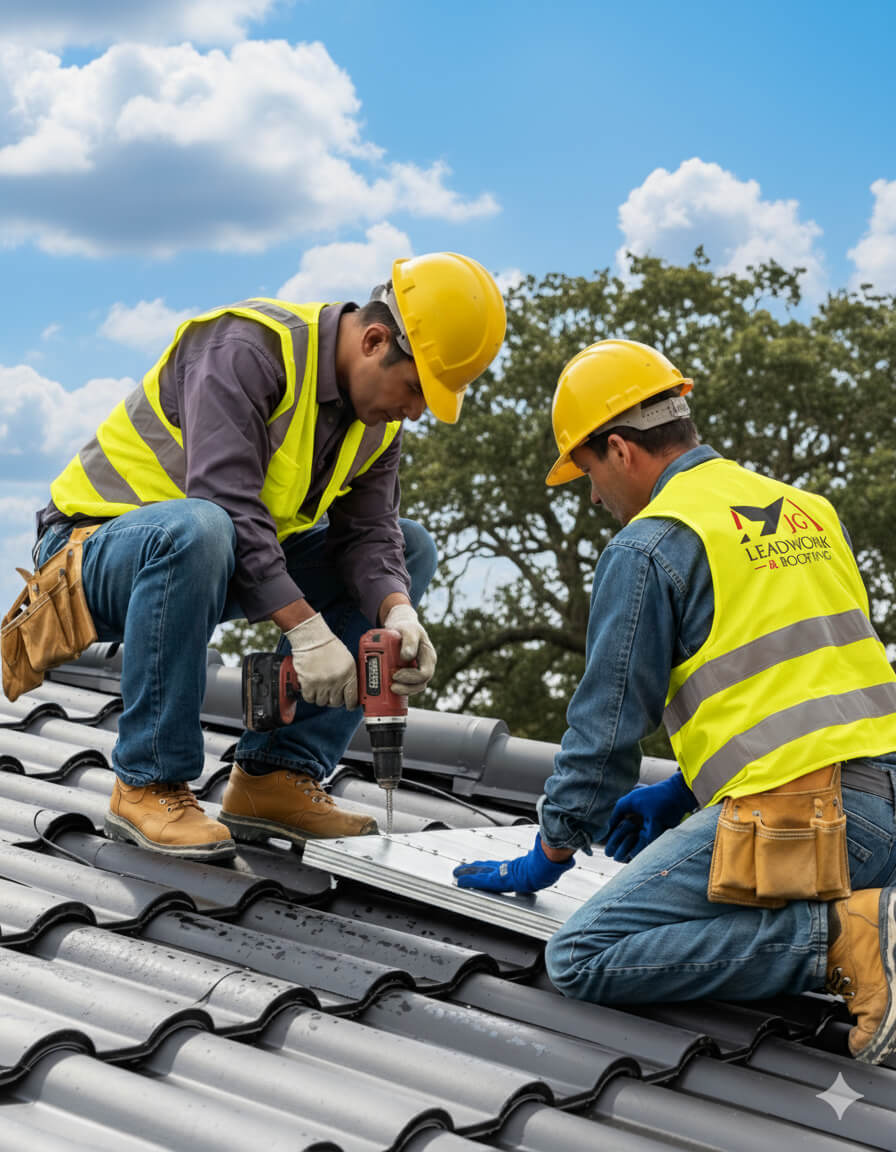
At JG Leadwork and Roofing, every project follows a structured QA process. Each stage—materials, installation, safety, and final sign-off—is measured against manufacturer specifications and UK Building Regulations to ensure durability, compliance, and warranty-backed performance across all roofing services.
Projects are only signed off once all QA checks are complete, giving clients confidence in long-term performance, structural safety, and insurance-backed peace of mind.
Every Roofing Services in Richmond upon Thames project by JG Leadwork and Roofing is delivered in strict alignment with UK Building Regulations and recognised frameworks. This ensures structural safety, energy efficiency, durability, and protects warranties and insurance coverage across residential, commercial, industrial, and heritage properties.
Clients can be confident their project is completed legally, safely, and insurance-ready—delivering long-term performance, compliance assurance, and complete peace of mind.
Property owners often wonder about Roofing Services in Richmond upon Thames—from costs and timescales to permissions. Below, you’ll find straightforward, trustworthy answers to the most frequent and practical queries.
Leaks following heavy rain are a common concern for property owners and facilities professionals in Richmond upon Thames—especially given the area’s exposure to wind-driven rain, sudden downpours, and frequent freeze–thaw cycles. Persistent leaks aren’t just an inconvenience: they threaten structural timber, interior finishes, insulation performance and, in severe cases, compliance with insurance or safety regulations. Addressing the causes requires understanding both the obvious and hidden pathways water can take into a roof. Here’s how the root problems typically unfold.
Over time, the primary waterproofing layer—whether it’s roof tiles, slates, or a flat roof membrane—can break down. For pitched roofs, cracked or slipped tiles create direct paths for ingress. Small cracks or gaps allow water to “track” uphill by capillary action (where water is drawn along tight cracks or laps, defying gravity). In flat roofs (like felt, EPDM, or GRP), surface crazing, blisters, or splits mean that heavy, wind-blown rain can force its way beneath the waterproof layer. These vulnerabilities are often missed during standard visual inspections, especially if the finish looks intact from ground level. If left unresolved, water soaks into underlay and battens, leading to damp stains on ceilings, sagging plaster, or even rotting timbers below.
Flashing is the sheet metal or flexible material designed to bridge gaps and direct water away from vulnerable junctions—such as around chimneys, roof valleys, skylights, and abutments. When flashing comes loose, splits due to age, or is poorly lapped (meaning the overlapping sections aren’t long enough), water exploits these joints. In particular, lead or aluminium flashing can crack at corners due to thermal movement or shrinkage, or lose its sealant at the upstand where it meets bricks or tiles. Tell-tale signs indoors include spidery stains radiating out from chimney breasts or damp patches on the side of loft hatches. Externally, white powdery marks (“efflorescence”) on masonry, or moss streaks below flashings, may indicate hidden leaks. In flat roofs, upstand details (where the roof meets a parapet or wall) are frequent entry points during driving rain.
Even the best roofs are tested by Richmond’s local climate: heavy rainfall, extended wet spells, and winter freeze–thaw. Ponding water—puddles that remain for more than 48 hours after rain—puts flat roofs at real risk. As water sits, it finds pinholes, forces apart weak seams, and, in cold snaps, can expand during freezing to widen cracks. Standing water of even 10–15mm depth steadily erodes roof membranes not designed for permanent immersion. Likewise, insufficient insulation or blocked ventilation paths (like covered eaves vents or packed lofts) can create interstitial condensation—that is, water condensing inside roof layers when humid indoor air cools in winter. The result? Drips that look like leaks, mould growth, and, over many months, rot or metal corrosion. UK Building Regulations Part L now require improved insulation and controlled ventilation specifically to counter these risks.
A thorough inspection combines close-up and remote techniques. Visual inspection—from ground or scaffold—looks for slipped tiles, missing mortar, and discoloured or warped flashings. Moisture metres allow surveyors to pinpoint damp patches in timbers or plaster that may be invisible to the eye. Where access is limited, borescope cameras enable viewing inside ceiling spaces via a small opening without full removal. For larger or flat roofs, drone imaging and infrared (thermal) scans highlight cold spots or moisture accumulation—vital for detecting hidden leaks or insulation voids over commercial properties. On complex flat roofs, professionals may take a core sample to check if water has saturated insulation layers beneath the surface. The results guide both immediate repairs (such as targeted tile replacement or resealing flashings) and advise on whether broader renewal is warranted.
| Root Cause | Typical Symptom | Risk if Ignored | Indicative Remedy |
|---|---|---|---|
| Cracked/slipped tile | Ceiling stains in attic/bedroom | Rotting rafters, mould | Tile reset/replacement |
| Failed flashing | Damp at chimney, wall edges | Internal damp, brick slip | Reflash/relap, new flashing |
| Ponding water (flat) | Blisters on flat surface | Membrane rupture, collapse | Improve falls, renew membrane |
| Blocked ventilation | Mould, damp attic smell | Timber decay, condensation | Clear vents, improve insulation/ventilation |
Leaks after heavy rain generally trace back to a blend of material ageing, overlooked detailing, weather-related stresses, and sometimes insufficient inspection. Early and accurate diagnosis protects your property from escalating cost and irreversible damage.
For property owners in Richmond upon Thames and London, the cost difference between slate and tile roofing stems from far more than material price alone. Key drivers include labour demands, compliance with UK Building Regulations (notably BS 5534 for structure and fixing), insulation requirements under Part L, heritage constraints, and ongoing maintenance. Grasping these elements early means fewer budget surprises and a roof that meets both current and future needs.
In practice, natural slate roofs are typically 20–40% more expensive than clay or concrete tile equivalents. The breakdown below highlights the most important pricing and regulatory factors to help you make an informed, future-proof decision.
Your choice of material is the biggest contributor to overall cost. Natural slate—a high-density quarried stone—usually commands two to three times the price per square metre compared with clay or concrete tiles. Slate supply and installation across London averages £120–£170 per m²; clay or concrete tiles generally fall between £70–£120 per m², labour included.
Additionally, slate installation is highly skilled and time-intensive, while many tile systems enable quicker, less specialised fitting.
Labour charges reflect not just the material, but also roof shape and adherence to technical standards. BS 5534 sets the UK’s structural and fixing requirements for pitched roofs, including minimum nailing, batten sizes, and wind resistance.
London’s dense housing and conservation areas drive up roofing costs compared with much of the UK. Local factors affecting price and complexity include:
Assessing costs side-by-side helps clarify the main differences:
| Factor | Slate Roofing | Tile Roofing | Why it matters |
|---|---|---|---|
| Material cost (per m²) | £45–£85 | £25–£50 | Upfront outlay |
| Expected lifespan | 80–120+ years | 35–60 years | Replacement cycle |
| Labour/fitting costs (per m²) | Higher (skilled, slower) | Lower (faster, modular) | Impacts total project cost |
| BS 5534 compliance | More fixings, heavier load | Standard fixings | Insurance, durability |
| Heritage/planning approvals | Often stricter/costlier | More relaxed | Legal compliance |
| Maintenance | Lower (individual slates) | Moderate (tile shifting) | Ongoing expenses |
Selecting between slate and tile means weighing not just upfront prices but also regulations, skilled labour, long-term maintenance, and your property’s expected lifespan. A roof inspection can clarify whether your structure suits heavier slate or more affordable tile, and ensure compliance with all London and Richmond standards.
Roof installation timeframes in Richmond upon Thames range from a few days for small flat roofs to several weeks for complex or heritage projects. The actual duration depends on your roof’s type, property size, age, and any unique site complications. Homeowners and landlords can use these expectations to plan for costs and household disruption, while facility managers and heritage custodians will need even clearer scheduling—especially where strict oversight, listed status, or conservation consent is required.
Weather, property access, and the structural state of existing roof timbers influence timelines as much as your chosen material. Understanding these factors helps you minimise risks, maintain building safety, and avoid unexpected costs during the work.
The average length of a roof installation is determined by both roof design and scope:
Most terraced or semi-detached homes require 5–10 working days for a complete strip and re-cover. This includes removing the old covering, checking/repairing timbers, laying underlay and battens, installing tiles or slates, and finishing ridge and lead details.
Small domestic flat roofs, such as garages or extensions, can often be completed within 2–4 days, while medium-sized or complicated installations (e.g., commercial roofs, roofs needing upgraded insulation) may take up to 2 weeks.
Specialist projects often require 10 days to several weeks for careful material sourcing, conservation officer inspections, and traditional craft techniques (e.g., lime mortar, hand-dressed leadwork).
Targeted repairs or storm response can be carried out in 24–48 hours, but further investigation may reveal underlying issues needing a follow-up.
Tight access, unusual roof forms, or the need for high-level scaffolding can add significant days to all estimates, particularly in Richmond’s conservation zones or on taller buildings.
Several key property and environmental features may extend or reduce the time required for roof installation:
Larger roofs and complex designs (steep slopes, dormers, multiple valleys) require more work, safety measures, and detailing.
Narrow roads, shared driveways, or protected trees may make scaffolding setup harder, sometimes necessitating cranes or special permissions.
If rotten joists or water-damaged battens are discovered, your contractor must repair these first, adding time for both survey and remedial work.
Prolonged rain, winter frost, and persistent wind can halt or delay work, especially for felt or liquid-applied systems that need dry, mild conditions to cure. This is known as the freeze–thaw cycle, where rapid temperature changes can affect material performance.
Listed buildings routinely require staged approvals, where progress pauses for inspection after each phase.
Advance planning, good site surveys, and up-to-date permissions are the best way to keep your timeline on track, especially in Richmond’s regulated areas.
Consistent, proactive maintenance is essential for getting the maximum lifespan from your new roof and keeps insurance guarantees intact:
Have flat roofs professionally inspected every 2–3 years and pitched (tile/slate) roofs every 5 years. After severe weather, check for visible damage—even if leaks aren’t obvious.
Clear gutters, valleys, and roof outlets at least twice a year to avoid blockages that cause water buildup and decay.
Look for ponding (standing water), split seams, and cracked thermal expansion joints—gaps that let roof materials move with temperature swings.
Monitor for slipped, cracked, or missing tiles/slates; check for degraded lead flashings around chimneys and junctions.
Most manufacturer warranties require documented inspections and repairs done by qualified professionals to remain valid.
Staying ahead of minor maintenance tasks stops small issues from escalating into major, costly leaks or structural decay.
Here’s how the leading roofing materials typically perform over the long term in Richmond upon Thames:
| Material | Typical Lifespan | Inspection Frequency | Maintenance Needs |
|---|---|---|---|
| Slate | 80–100 years | Every 5 years | Replace cracked/slipped slates |
| Clay/Concrete Tile | 50–75 years | Every 5 years | Repoint ridges, replace broken tiles |
| Felt (Flat Roof) | 10–20 years | Every 2 years | Repair joins, seal edges |
| EPDM Rubber | 25–40 years | Every 3 years | Check seams, clear debris, reseal edges |
| GRP Fibreglass | 25–35 years | Every 3 years | Inspect joints/upstands, recoat if needed |
| Lead (Heritage) | 60–100 years | Every 5 years | Clear gutters, monitor for splits/cracks |
| Liquid-Applied | 20–40 years | Every 3 years | Recoat as needed, check outlets/joints |
Actual lifespans depend on weather exposure, installation quality, and maintenance routine. With regular checks and professional care, most roofs in Richmond upon Thames can be expected to last at (or often beyond) the upper end of these ranges.
The cost of roofing in Richmond upon Thames is best evaluated not simply by the up-front price, but by what underpins long-term value—namely, warranty coverage and skilled installation. Homeowners seek certainty, not just a cheaper invoice. Landlords rely on predictable repairs for budgeting and compliance. Businesses depend on robust roofing solutions with documented risk transfer. For all, true financial confidence comes from understanding what protections and standards are actually included in the cost.
Roofing costs are shaped by several interconnected factors: labour, material selection, property type, and project scale. Small repairs—such as patching leaks or replacing slates—require less labour and materials, so they land at the lower end of pricing. In contrast, complete roof replacements for large or complex structures increase costs considerably, especially with insulation upgrades or heritage features.
| Service Type | Typical Range (UK) | Key Influences |
|---|---|---|
| Roof Repair | £250 – £1,200 | Damage type, access, materials |
| Roof Replacement | £5,000 – £15,000+ | Size, structure, insulation, finish |
Repair costs are influenced by ease of access and the need to match existing roof fabric. Full replacements reflect not only the footprint and pitch but also insulation and the use of specialist materials. For both, upgrades required for Part L compliance (energy efficiency) can add to the initial investment, but they secure benefits on future energy and compliance costs.
A quality roof should come with an insurance-backed warranty, generally covering 10 to 20 years. This warranty protects both the physical materials—tiles, membranes, leadwork—and the workmanship, addressing issues that may emerge well after installation. These assurances are often transferable, letting new owners or insurers verify the roof meets lending, resale, or insurance requirements.
For many, a valid warranty is indispensable for meeting Part L compliance, which is mandated for efficient energy performance and influences home resale value. Should building envelope defects appear, warranty documentation streamlines claims and ensures costly repairs aren’t left solely to the policyholder.
Long-term warranties are as much about peace of mind as they are about cost recovery.
Warranties protect against surprises: hidden flaws, premature wear, or even installation mistakes that emerge only after weather exposure. Rather than relying solely on legal redress, documented coverage gives direct recourse and helps safeguard your asset’s value.
Choosing an accredited installer is essential. Look for NVQ-qualified roofers, CITB-registered tradespeople, or certifications like Which Trusted Trader or National Federation of Roofing Contractors membership. These endorsements reflect proven technical competence, compliance with safety standards, and an ongoing commitment to professional codes.
Accredited specialists follow current Building Regulations rigorously, a requirement for most manufacturer warranties. Some guarantees are only valid when issued by approved fitters. Qualified installers understand not just materials but also how ventilation and insulation must interlock—reducing the risk of costly errors, call-backs, or shortcutting that could void coverage or insurance.
Accreditation isn’t a marketing badge—it’s a proven philtre for skill, reliability, and accountability.
Opting for unqualified or lowest-cost solutions brings high financial risk:
Even well-intended shortcuts often multiply costs down the line—whether through sudden leaks, denied claims, or the need to replace non-compliant works. Roofing in Richmond upon Thames is not just about weather protection but lasting risk management and value retention through strict standards, durable warranties, and fully qualified installation.